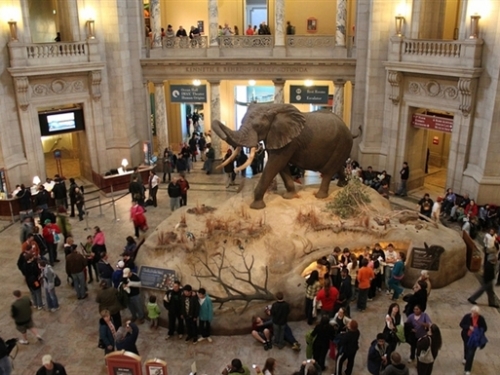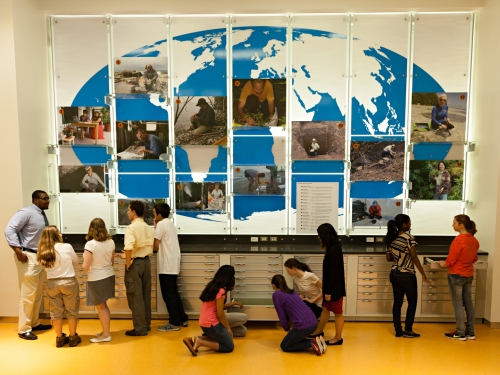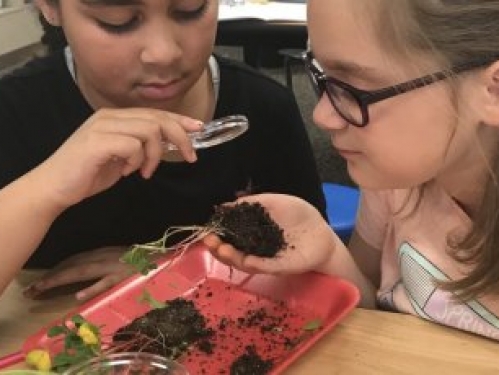Public Engagement
The Smithsonian engages with the public through onsite and traveling exhibitions, educational offerings, public programs and events, and media products that tell the American story, explore diverse cultures and communities, and reveal the natural world. It also maintains a network of Affiliate museums, zoos, and other cultural and educational organizations across the United States and beyond.

More people visit the Smithsonian than any other museum or museum complex in the world. Visitors to the nation’s capital in Washington, D.C., can tour its museums and National Zoo free of charge, 364 days a year. Visitors to New York City can see two Smithsonian museums: the George Gustav Heye Center of the National Museum of the American Indian and the Cooper Hewitt, Smithsonian Design Museum. Learn more about visiting.

The Smithsonian’s museums, gardens, and National Zoo provide visitors with opportunities to discover, be inspired, learn, contemplate, celebrate, have fun, socialize, and more. Understanding the experience of visitors helps the Institution shape its exhibitions and programs to better serve the public. The data in this section come from two pan-Institutional surveys, conducted in summer 2004 and across four seasons in 2015-16. In addition, individual units analyze their visitors’ experience on an ongoing basis. The Overall Experience Rating is a five-point rating scale used in Smithsonian visitor surveys since the early 2000s. The Net Promoter Score is a widely-used customer satisfaction metric based on the question, "On a scale from 0 to 10, how likely are you to recommend this museum to a friend?”

Smithsonian exhibitions showcase the Institution's research and collections to the public. Roughly two thirds are permanent (long-term) exhibitions and one third are temporary exhibitions that often showcase, for a limited period of time, collections items not regularly on display. About two thirds are classified as “major” exhibitions, while the other third consists of small display cases, single items, and other small-scale exhibits. You can explore Smithsonian exhibitions online.

Smithsonian educational offerings include docent-led tours and other onsite programs, internships and fellowships, digital learning resources for homes and classrooms special events such as the annual Folklife Festival on the National Mall, educator-created publications, and much more. The Smithsonian Science Education Center’s inquiry-based science curriculum is helping students in every U.S. state and dozens of countries worldwide to understand science and engineering at a deep level. Visit the Smithsonian's education page for more information.

The Smithsonian Science Education Center (SSEC) mission of "Transforming K-12 Education Through Science" in collaboration with communities across the globe involves promoting inquiry-based, integrated science, technology, engineering, and math (STEM) education; supporting diversity, equity, accessibility, and inclusion in STEM education; advancing STEM education for sustainable development; and translating Smithsonian research and collections into resources for teachers and students. SSEC works toward these goals by building support for science education among school leadership, furthering the professional growth of educators, and developing exemplary curriculum materials and digital resources. At the heart of these efforts is the idea that all children should have opportunities to learn about science and to be part of a scientifically literate global citizenry.

Through its Affiliations program, the Smithsonian forges long-term relationships with a network of museums and similar organizations to share resources, expertise, and ideas. Affiliates, which are selected in a rigorous application process, collaborate with the Institution to bring the Smithsonian to their community in numerous ways. Through its more than 200 Affiliates, the Smithsonian reaches about 30 million visitors each year—roughly equal to the number who visit the Smithsonian’s museums in a non-pandemic year—by working with Affiliates to create hundreds of public programs, host dozens of Smithsonian exhibitions, and display thousands of Smithsonian artifacts.

Another way the Smithsonian shares its collections and expertise with the nation and the world is through traveling exhibitions. The Smithsonian Institution Traveling Exhibition Service (SITES) develops and circulates an extensive range of exhibitions and educational resources about art, science, history, and popular culture to exhibitors across America and beyond, from major urban museums to small rural community centers. Visit SITES for more information.
ODT/OCIO
